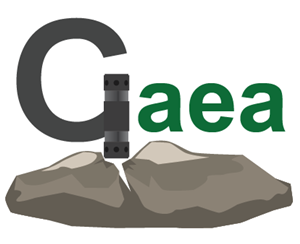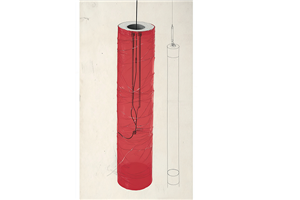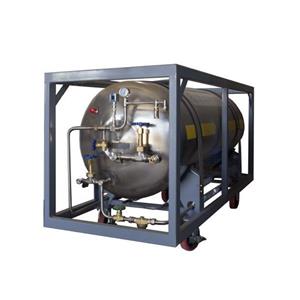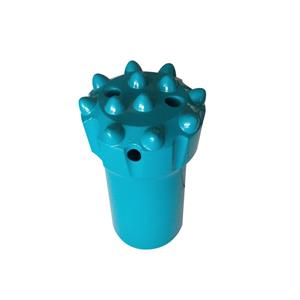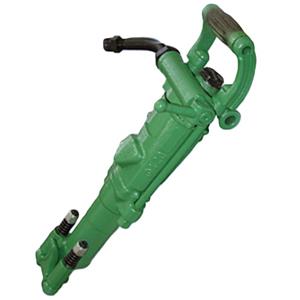Safety and technical operating procedures for various positions in metal mines
1. Safety operating procedures for rock drillers:
(1) Before drilling, check whether the rock drill, drill bit, and gas leg meet the requirements, check whether the air and water pipe joints are tight to ensure that there is no water leakage or air leakage, and check whether the rock drill is oiled and whether there is any damage.
(2) Before drilling, the roof and two sides of floating stones should be handled properly, and water should be sprinkled to wash away the dust on the working surface.
(3) It is strictly forbidden to drill residual holes and blind holes.
(4) The posture should be correct when drilling. It is not allowed to ride on the gas leg or press on the machine to drill holes to prevent the drill bit from breaking and injuring people. When drilling upwards, prevent the drill bit from falling and hitting your feet. When drilling downwards, do not press on the machine to prevent the drill bit from breaking and injuring people.
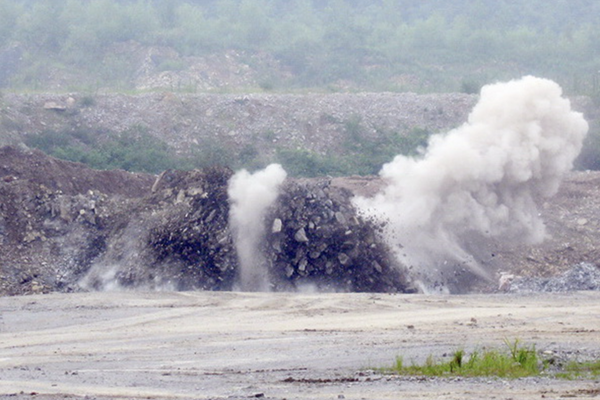
(5) Do not drill dry holes. When starting the rock drill, use water first and then air. When stopping the machine, use air first and then water. When drilling, the amount of water should be properly controlled. Too much water will easily affect the drilling speed. Too little water will easily block the drill and increase dust. (6) When starting to drill, the air inlet should not be fully opened, and excessive thrust should not be applied, as this will break the drill and cause injury. (7) Pay attention to the arrangement of blast holes according to the properties of the ore and rock to ensure the specifications of the tunnel. (8) The drilled blast holes should be cleaned in time and properly protected. (9) After drilling, the mechanic is responsible for rolling up the air duct and placing it in a safe place. After igniting the blast, turn on the fan to blow out the blast smoke to prevent people from being suffocated by the blast smoke. (10) After drilling the blast holes on the working face, clean the tools and move other equipment to a safe place. (11) Pay attention to the angle of the gas leg. It should not be too large or too small. Advance forward little by little. Do not rely solely on increasing the gas leg inclination angle to advance. This can prevent the drill from breaking and prevent the gas leg from rising due to the sudden increase in wind pressure and injuring people. (12) If there are signs of dangerous spalling or roof collapse on the working face, the work should be stopped immediately and handled. Work can only be resumed after it is safe. (13) When digging a skylight using the wooden support method, check whether the cross brace is firm before drilling to prevent falling and injuring people. (14) The foot pedal of the skylight should be placed on the bottom of the large surface to keep the pedal stable to prevent the machine gas leg from overturning the pedal and causing the machine and people to fall. 2. Safety operating procedures for blasters: (1) Blasters must be politically reliable, conscientious and responsible in their work, and have been trained and have a certain amount of experience. (2) Before blasting, warning signs should be hung on the passages related to the blasting site, and a whistle should be blown or a "blasting" should be shouted. (3) Before blasting, you must be familiar with the arrangement of the blast holes on the face, the number and depth of the blast holes, and remove the mineral powder, stones, etc. inside. If you find that the blast holes do not meet the technical requirements, you should deal with them in time. (4) The processing of explosive materials must comply with the following regulations: ① The processing of super-explosive tubes must be carried out in a separate room. The processing table must have a raised edge and be cushioned. ② Defective and bent parts of the fuse must be removed. (5) The processing of explosive packages can only be carried out in a safe place at the blasting site. The processing volume each time should not exceed the required volume for the blasting. Before inserting the detonator into the package, open the bottom of the top of the roll and use a copper, aluminum or wooden awl to pierce the center of the end of the roll. (6) When loading, gently straighten the detonating tube by hand, do not pull it too tight, and use a wooden stick to push it into the blast hole one by one in sequence and gently without collision. (7) Blasting is not allowed in coal holes without blast mud. blast mud is made of non-flammable, plastic shuttle material. It is forbidden to use blocky materials for gun mud.
(8) It is forbidden to drill holes and charge in parallel; it is forbidden to use iron rods and explosives; it is forbidden to use fireworks and open flames for lighting.
(9) The following regulations must be observed during filling work:
① After charging, the filling quality must be guaranteed.
② It is forbidden to detonate the blasthole without gun mud filling.
③ When filling, prevent the wires leading out of the explosive package from being damaged.
(10) When detonating with open flames, the following regulations must be observed:
① The excavation working face, wall expansion, top selection and shallow hole mining must be ignited once. When igniting in groups, one person shall not be more than five groups.
② When igniting a single secondary blast, the signal tube or timer fuse must be ignited first. Its length shall not exceed one-third of the shortest fuse ignited at that time, but the longest shall not exceed 0.8 meters.
③ The length of the fuse shall ensure that personnel can evacuate to a safe place, but the shortest shall not be less than 1 meter.
④ When blasting in vertical shafts, inclined shafts, hanging tanks, and skylight working faces, it is prohibited to use open flame blasting.
⑤ Before igniting the fuse, the length of the cut head should not exceed 5 cm. A fuse can only be cut once. It is strictly prohibited to ignite while installing or cutting.
⑥ From the last shot, no one is allowed to enter the working face within 15 minutes underground or 5 minutes in the open air. No one is allowed to enter until the smoke is exhausted.
⑦ It is prohibited for a single person to ignite underground.
(11) It is strictly prohibited for anyone to look back at the shot.
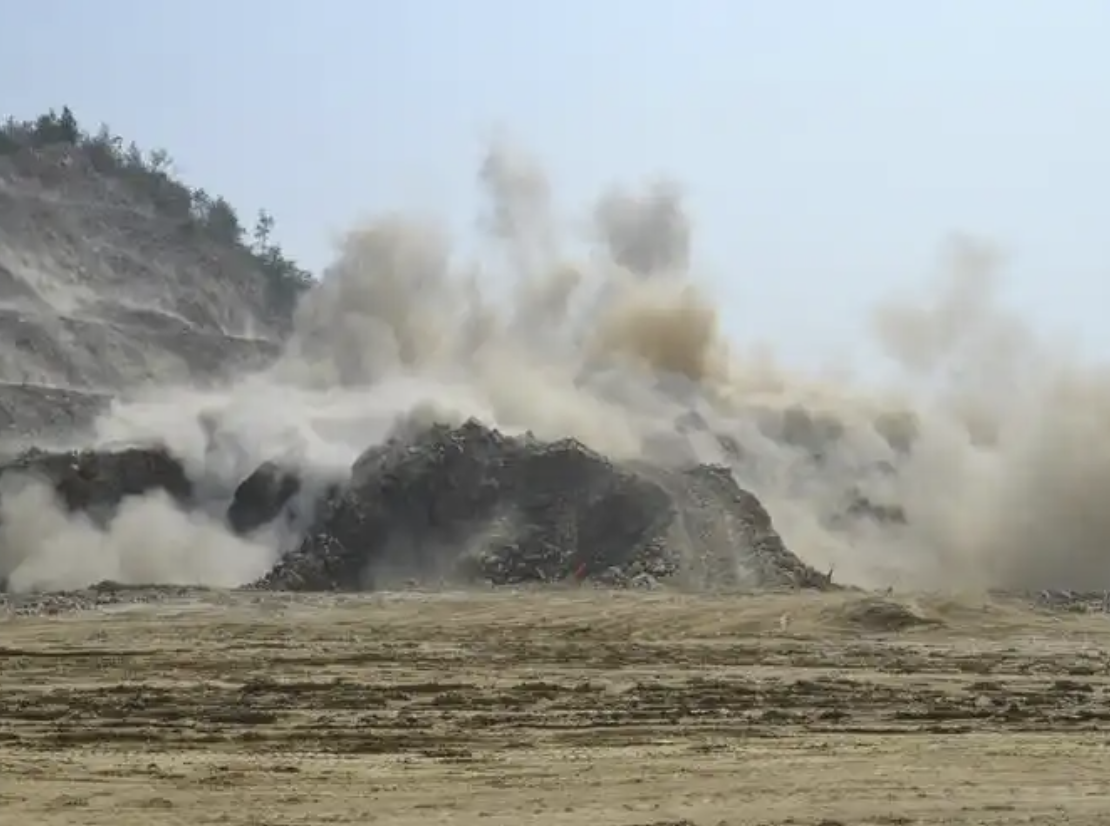
(12) The following regulations must be observed when handling blind shots:
① If a blind shot is found, it must be handled in a shop. Otherwise, a clear sign should be set up nearby, and appropriate measures should be taken and handover procedures should be completed.
② Blind shots that are difficult to handle should be handled under the guidance of a safety officer.
③ When handling blind shots, it is prohibited to do other work in the danger zone. After handling the blind shot, the remaining explosive materials must be checked and removed, and only when it is confirmed to be safe can the operation be carried out. ④ To deal with blind blasting, you can use reloading explosive packs or drilling parallel holes (no less than 0.3 meters away from the blind blasting hole) for blasting.
⑤ It is forbidden to take out or pull out the explosive packs, and it is forbidden to blow them with wind.
(13) The remaining explosives, detonators, fuses, etc. after use should be returned to the material warehouse in time. It is strictly forbidden to throw them around or transfer them.
3. Safety operating procedures for porters:
(1) Before operation, first check whether there is blasting smoke, residual blind blasting and floating stones on the face. Only after they are handled safely can the operation be carried out.
(2) Before loading the rock, spray water and wash the rock wall.
(3) If residual blind blasting is found, it shall not be handled privately. If residual blind blasting detonators are found, they must be handed over to the blaster for disposal.
(4) Before moving large blocks, check whether they have cracks. It is strictly forbidden to use two or more people to lift large blocks for loading. If one person cannot lift them, they should be crushed. When using a sledgehammer, check whether the hammer head is firm and pay attention to the people in front and behind. (5) When the rock loader is working, it is strictly forbidden to pick up the car in front of the rock loader. (6) When placing the funnel, pay attention to the following matters: ① When placing the funnel, people must stand on both sides. It is forbidden to place ore (waste rock) directly into the funnel. ② It is forbidden to poke ore into the funnel or to jam the blasting. ③ When placing the funnel, be careful not to injure people with the crowbar. ④ When placing the funnel, first check whether the support near the funnel is good. It is strictly forbidden to empty the funnel. ⑤ When dealing with a blocked funnel, stand on one side and do not face the funnel mouth directly. 4. Safety operating procedures for support workers:
(1) Before erecting the pillars, knock the sides and the top, and clean the top plate and the two sides of loose stones. Wait until it is safe and reliable before starting the support work. Wear a mask when digging the pillar holes.
(2) The specifications of the pillars and the spacing between the sheds should be determined according to the pressure on the top plate and the two sides and the degree of rock fragmentation. The density should be increased if necessary.
(3) The column foot of the horizontal tunnel must be dug to the bottom plate to ensure the stability of the pillars. All interfaces of the shed must be closed. The angle between the pillars and the horizontal is 80 degrees to ensure uniform force.
(4) After the shed is erected, use wood to tighten the two sides. If the over-excavation is large, it can be filled with rough stones. If there is a cavity in the collapsed roof, it must be piled with wood or other forms of wood on the shed to fill and solidify the cavity.
(5) After the shed is erected, set the support wood to prevent the shed from being blown down by blasting.
(6) The skylight supports must be built firmly and securely to prevent the blasting from collapsing. There should be three supports every 1.8-2.0 meters on one side of the pedestrian walkway and two supports every 1.8-2.0 meters on the other side.
(7) When going up and down the skylight, the tools (axe, chisel, hammer) must be placed in the tool bag. The materials for going up and down must be tied tightly with ropes. The ropes used must be checked regularly.
(8) The skylight supports and ground beams must be followed up in time, with each support 0.8-1.0 meters apart. When climbing at an angle greater than 45 degrees, the supports and ground beams should be no more than 1 meter away from the face of the work to ensure the loading and blasting.
(9) Ladders should be installed on the sidewalk of the inclined shaft, and rest platforms (anti-sheds) should be arranged in a row with the steps. The distance between each rest platform should not exceed 8 meters, and handrails should be provided on both sides of the ladder.
(10) The distance between the ladder and the working surface of the inclined shaft should not be greater than 5 meters, and the distance between the inclined shaft supports should not be greater than 2 meters, so as to connect the road and install the water pump. 5. Safety operating procedures for rock loaders: (1) Rock loaders must undergo training and be familiar with the operating techniques and mechanical performance. Unqualified operators are not allowed to operate the machine. (2) Before operating, the driver must carefully check whether all parts of the machine are in good condition, whether there is any loose stone that needs to be handled within the working range of the rock loader, whether the width and height of the tunnel are sufficient, and whether the distance from the driver's operating side to the tunnel wall is not less than 0.7 meters. (3) The rock loader must be washed before loading, and the waste rock pile must be sprinkled with water to eliminate dust. (4) No one is allowed to approach the funnel's operating range, and people near the mine car must stay away during unloading. (5) When the rock loader is working, it is prohibited to oil the machine or clean the rock loader. (6) Two people are prohibited from operating a rock loader at the same time. (7) When the driver leaves the rock loader, the power must be cut off. When powering on, the personnel around the machine must be notified in advance. (8) The driver shall not dismantle any part of the machine without the cooperation of maintenance personnel. (9) The rock loader should be equipped with lighting. (10) When blasting, the machine should be placed in a safe place. (11) When the machine is working, the cable should be pulled at all times to prevent it from being crushed. 6. Safety operating procedures for plumbers: (1) Connect the air and water pipes in time according to the operation requirements and install the air and water heads to ensure that there is no water leakage or air leakage.
(2) When connecting pipes in horizontal tunnels, the following regulations should be observed:
① The air and water pipes should not be more than 10-12 meters away from the face of the tunnel, and the rails should not be more than 5-7 meters away from the tunnel head.
② Each tunnel head must have an air head and a water head.
③ The air and water pipes must be securely suspended with hanging pipe eyes, and the wire heads should be bent towards the rock wall.
④ Each through-line should be equipped with a separate Feng Shui gate, and a general Feng Shui gate should be installed every 100-300 meters on the main line.
⑤ According to the railway specifications, use sleepers that meet the requirements. The sleeper spacing is generally maintained at about 0.8-1.0 meters. The sleepers should be lengthened and denser at the turnouts and bends.
⑥ According to the design requirements, lay the track according to the waistline, widen the curves and raise the outer rails.
⑦ The spikes should be staggered and not nailed in a straight line. The screws at the connection between the rails and the splints should be tightened and fixed with steel bars.
⑧ The Feng Shui pipes in the Hengchuan tunnel should be arched or grounded to ensure the qualified height (more than 1.8 meters).
(3) The following regulations should be observed when connecting pipes on the skylight:
① The Feng Shui pipe must be close to the side and must not pass through the middle.
② Every 6-8 meters, it must be firmly fixed to the tunnel side with No. 8 wire.
③ The wind and water pipeline should be connected to the bottom of the safety shed as the skylight is excavated.
④ There must be an independent wind and water gate under each skylight.
⑤ The wind and water pipeline can only be connected after the blasting smoke is blown away. Single-person operation is prohibited.
(4) The connection of wind and water pipelines and railway work should be carried out half an hour after the drilling is completed and before blasting. Try to avoid connecting wind and water pipelines after work.
(5) Do a good job in the maintenance of wind and water pipelines and deal with problems such as air leakage, water leakage and explosion in a timely manner.
(6) The threads of the pipeline must be tightened tightly. After connection, it must be hung firmly with wire and the wire head bent towards the rock wall.
(7) When repairing the pipeline, close the air damper first. Do not repair with wind to prevent the pipe from breaking and injuring people.
(8) The spray sprinkler facilities used on each working surface must be maintained.
(9) All wind and water pipelines should be laid according to the design requirements, and avoid too many or too sharp elbows. (10) If the air duct is 500-1000 meters long, an air-water separator should be connected at an appropriate location. If there is water in the air duct, it should be discharged immediately.
(11) When laying the turnout, the wheel rails should be installed.
(12) The track gauge should be widened and the outer rails should be raised in the curved section of the line.
